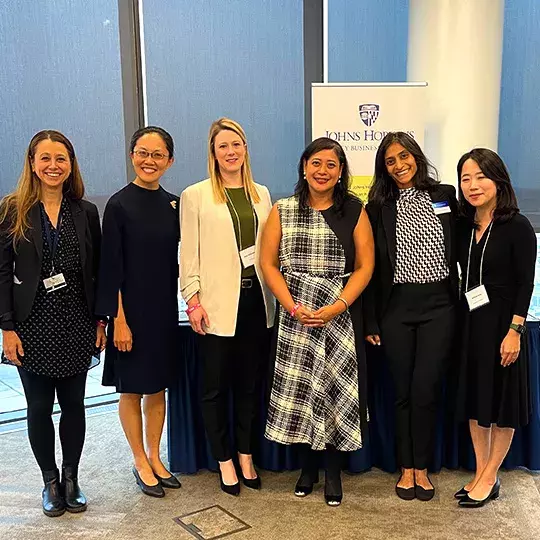There is a fundamental gap between innovation in the pharmaceutical industry and affordable access for all. One in four Americans taking prescription drugs say it’s difficult to afford their medicines.

Getting more health for our health care spending with innovations in the biopharmaceutical industry
What if someone you love had a terminal illness or chronic disease, and couldn’t afford or access a potentially lifesaving drug? You might feel hopeful that there are treatments available, but it is not until your loved one can have those medicines that they can really make an impact.
Whether it is a terminal illness or a chronic disease, there is a fundamental gap between innovation in the pharmaceutical industry and affordable access for all. According to a Kaiser Family Foundation poll, one in four Americans taking prescription drugs say it’s difficult to afford their medicines.
“While companies in the pharmaceutical industry are rapidly innovating through new drugs and therapeutics, they struggle with access and affordability issues,” said Supriya Munshaw, an associate professor of practice at Johns Hopkins Carey Business School and an expert in the commercialization of early-stage technologies, especially in life sciences and medical devices.
What are the barriers?
Munshaw’s expertise, and her role as the associate director in Carey’s specialized Innovations for Substance Use Disorder program designed for researchers looking to turn substance use disorder discoveries into scalable market solutions, made her an ideal co-host for the recent Innovations in the Biopharmaceuticals Industry Conference. The conference brought together thought leaders from academia, policy, and industry to discuss pressing issues in pharmaceutical innovation.
One issue is the socioeconomic barrier facing clinical trials. Panelist Rujul Desai, partner at Covington and Burling LLP, a law firm specializing in public policy, explained that living too far from larger medical research institutions, where clinical trials tend to occur, is a major barrier to enrolling people from low socioeconomic backgrounds.
Trust is another barrier. Desai pointed out that some populations tend to resist joining trials. For example, a 2021 report from the Association of American Medical Colleges said only 5 percent of trial participants in general medical journals’ published papers between 2015 and 2019 were Black. While this is partly attributed to socioeconomics in communities, it’s also attributed to decades of lower-quality care for Black patients, inappropriate criteria for exclusion, and even a lack of effort to reach Black patients for participation. According to the National Institutes of Health and the Food and Drug Administration, this leads to underrepresentation in clinical results.
What are the solutions?
Desai suggested that overcoming the trust barrier might require peer-to-peer testimonials, in a format as simple as video. “Innovation doesn’t always mean the most sophisticated methodology,” Desai said. “Sometimes it means simpler methods, applied smartly, to reach the best solution.”
Panelists on the access and affordability panel discussed alternatives to the fee-for-service model, and how population-level drug subscriptions have been successful in a few places. Johns Hopkins Bloomberg School of Public Health Vice Dean for Public Health Practice Joshua Sharfstein, MD, gave several examples from his time serving as commissioner of health for Baltimore City.
“We need to use the money we’re putting into health care to focus broadly,” he said. “Why is our life expectancy no better with such a great investment? We can get a lot more health for our health care dollar if we come together and think about populations.” Sharfstein wants to put more emphasis on prevention and responsible prescribing. Not needing medicine in the first place, he said, is a good way to avoid not being able to afford it.
“Academic institutions like Johns Hopkins can bring stakeholders together to ignite conversations and ideas to get these innovations to patients who need them the most.”
Supriya Munshaw, Associate professor of practice and associate dean for Academic Programs
Cost is a massive concern in all corners of health care, including prescription medication. In 2021, Americans spent $4.3 trillion on health, $603 billion of which went toward prescription drugs. But anyone you ask, from consumers to prescribers to manufacturers, will tell you the industry is riddled with problems. Political pressures affect how drugs reach the market, prices are exorbitant, and much of the population is underserved.
AARP Prescription Drug Policy Principal Leigh Purvis and PhRMA Deputy Vice President of Policy and Research Jocelyn Ulrich discussed the 2022 Inflation Reduction Act. Many in the industry worry that the act will impede innovation. The concern is that the prescription drug price negotiation provision will negatively affect revenue, which ultimately fuels research and development. In this respect, innovation might mean changing the way insurance companies and the government prioritize treatment.
“It’s a time for political bravery,” said Ulrich.
The value of knowing more
With growing industry comes growing demand for support. Yaminah Leggett-Wells, senior director at Amgen, a leading biotech company developing a pipeline of medicines, pointed out the need for data scientists in the industry.
“We’re looking for the best and brightest in the industry and academia to make sure our customers are getting value,” she said.
Carey MBA student Rinika Putatunda said that kind of insight is why she attended the conference.
“I want to know what’s coming up so that as I chart my career path, I’ll be in a good position to join the industry.”
Gatherings like the Innovations in the Biopharmaceutical Industry Conference are often open to Carey students. It’s a distinct advantage for them, since these conferences also help galvanize the health, research, political, and care delivery systems toward meaningful and sustainable solutions to these issues.
“Academic institutions like Johns Hopkins can bring stakeholders together to ignite conversations and ideas to get these innovations to patients who need them the most,” said Munshaw.


